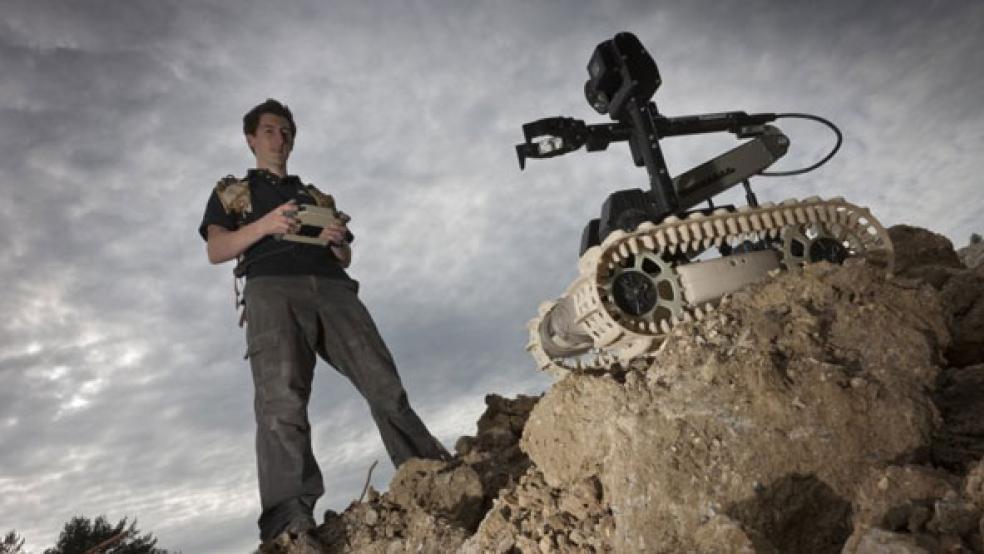Given the tremendous advancements taking place in the field of robotics right now, the increased use of robot soldiers by the Pentagon seems all but inevitable — drastically altering the way the United States wages war. But the rise of robots will have an even broader impact on the way the Defense Department spends money.

Right now, each soldier in Afghanistan costs the Pentagon $850,000 a year, according to DOD estimates. Some independent experts put that number as high as $1.2 million.
That’s just the cost of keeping soldiers in the field of battle. Over time, these soldiers are expected to cost the Pentagon tens of billions of dollars in long-term health care costs. This expense is expected to be one of the main drivers of DOD spending in the coming years: According to the left-leaning Center for American Progress, health care costs will reach $63.9 billion by 2015.
Compare that, however, to the cost of building and maintaining a robot. The TALON robot, a small rover that can be outfitted with weapons, costs $230,000 right now. The SGR-A1, used by the South Korean military to detect movement in the demilitarized zone, costs $200,000. The 710 Warrior, a miniature rover with enough power to tow a car, costs between $300,000 and $400,000.
RELATED: Rise of the Killer Robots: Hint – This Is Not a Movie
Even the larger, more sophisticated robots that are in development are relatively cheap. PETMAN, the humanoid robot that can run and do pushups, cost $26.3 million to develop. The Pentagon has only invested $11 million in its program to develop robots that can act autonomously. The Navy has invested $813 billion in its unmanned X-47B, a project that is close to operational.
This might seem like a large amount until you consider that DOD plans to spend $1.5 trillion on its manned F-35.
Of course, these costs will grow as the robots are produced on a larger scale. And people will never be completely eliminated from the DOD: Pentagon commanders are likely to use robots as companions to human soldiers, not as replacements.
But because they’re cheap to maintain, the rise of robot warriors is likely to reduce DOD spending. As production increases, efficiencies will be found, reducing costs. All signs indicate that the cost of using a robot in battle is likely to be less than using a human.
The real savings come through medical costs. Robots do not require long-term medical care, the time and services of the Veterans Administration, or anything else connected to the government’s bottom line.
If the robots are destroyed, they’re replaced. If they’re damaged, they’re repaired. They don’t require rehab or multiple surgeries to recover. And they don’t require psychological care for costly and tough-to-treat afflictions like post-traumatic stress.
Unless they begin to think.





